Visitors to Washington State Parks can enjoy snacking on sweet wild berries along a trail, standing in-awe of a giant evergreen and encountering flowers only found in the wild. Whether you are a long-time resident of the Pacific Northwest, or you are new to the region, learning about native plants and trees can help you enjoy your visits to state parks and make the most of your time outdoors.
Learn about five native plants below and visit the WSPF interactive map to plan your trip to a state park today.
1) Salmonberry
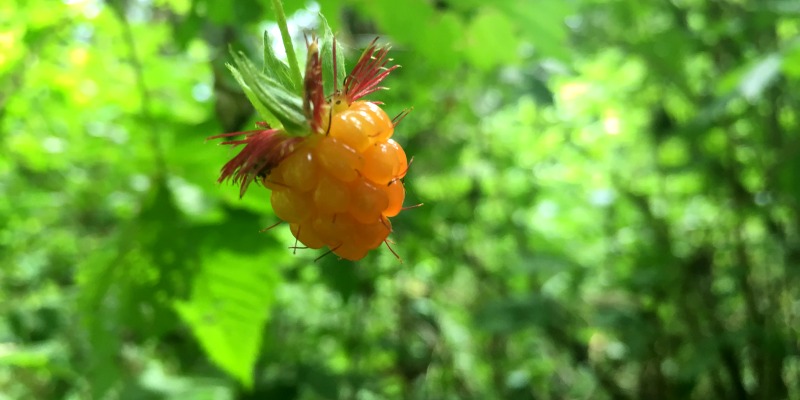
You know summer has arrived when salmonberries are in season. These sweet native berries are a local favorite for snacking* along a trail in early summer. Mature berries are yellow, orange or red and they grow in moist coastal forests. Learn more about Edible Berries of the Pacific Northwest via Northern Bushcraft.
- Latin Name: Rubus Spectabilis
- Habitat: Native to western US and Canada
- Identifiable Traits: These fragrant plant blossoms bloom from summer to fall and can be found in full sun with at heights 2-6′ with 4-5′ clusters of pinkish/purple blooms.
- Life-changer: Free, fresh berries while you hike.
* Note: Eat wild plants and berries at your own risk. WSPF recommends you do your research or consult experts before consuming wild plants.
2) Milkweed
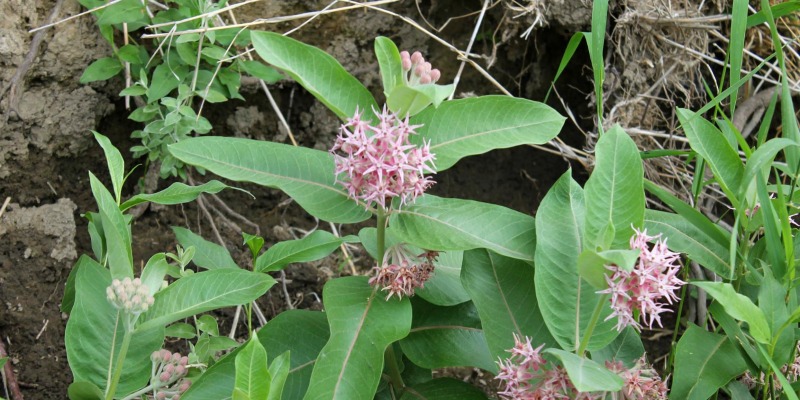
Find and report these fragrant plants to assist in the conservation of monarch butterflies. Milkweed plants provide sustenance for monarch caterpillars that eventually emerge as the butterflies that are renowned for their long-distance seasonal migrations to California and Mexico.
Monarch butterflies have suffered population loss due to the loss of these plants and habitat. When you find milkweed plants in the wild, you can serve as a citizen scientist by noting and reporting the location of these plants to the Xerxes Society so that they can complete their distribution survey model. The more data collected, the more accurate this model will be to help Xerxes identify areas where milkweed plantings (and monarchs) will flourish.
You also have an opportunity to assist the Washington Department of Fish and Wildlife by identifying areas in the Columbia Basin with patches of our native showy milkweed (5 or more plants). WDFW is especially interested in mapping locations where this plant occurs, because of its importance in the life-cycle of the monarch butterfly. You may contact Ella Rowan, Assistant District Wildlife Biologist, Ephrata Office, with estimates of location or coordinates at (509) 754-4624 x232 or by e-mail, Ella.Rowan@dfw.wa. gov
- Latin Name: Asclepias speciosa
- Habitat: Native to western US and Canada
- Identifiable Traits: These fragrant plant blossoms bloom from summer to fall and can be found in full sun with at heights 2-6′ with 4-5′ clusters of pinkish/purple blooms.
- Life-changer: You can become a citizen-scientist and help conserve monarch butterflies.
3) Arrowleaf Balsamroot
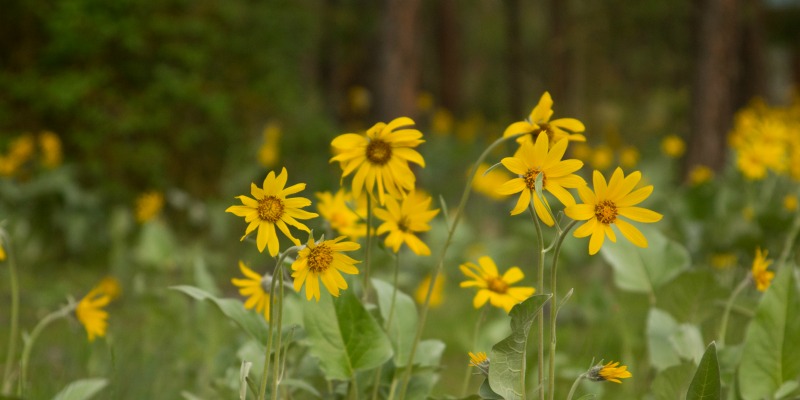
Also known as the “Oregon sunflower”, these cheery yellow flowers carpet hillsides in eastern and central Washington in spring. They are a member of the aster (sunflower) family and have been used for consumption and medicinal purposes by Native Americans.
- Latin Name: Balsamorhiza Sagittata
- Habitat: Dry sunny open hillsides and praries to mid upper elevations and a large range from British Columbia to the Mohave Desert in California and as far east as South Dakota.
- Identifiable Traits: A long taproot, hairy stem and yellow-orange flower-heads. They can be seen from May to July.
- Life-changer: These wild and cheery flowers will make you smile when we see them. “Cultured flowers found in gardens and vases are sweet and nice and perfectly sculpted,” writes Erika Klimecky via Washington Trails Association, “But when nature, on her own, rolls back the stark snow and covers a hillside in dewy golden flowers, I am always captivated.”
4) Western Red Cedar
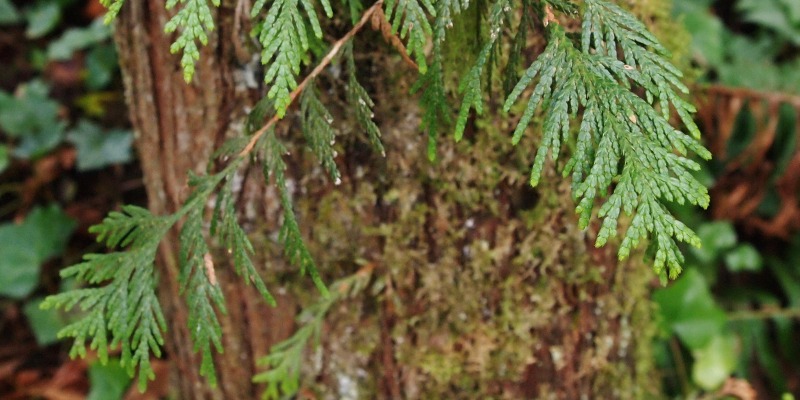
Also known as the “tree of life” this magnificent conifer flourishes along the coastal fog belt from northern California to Alaska and inland from the Pacific Ocean to Montana. This tree has been referred to as the cornerstone of northwest coastal native culture do to the large-scale use of its wood and bark by the northwest coastal peoples. Wood served for house planks, various boxes, canoes and more. Its bark was made into skirts, capes, and dresses for women. Roots of the tree was used for baskets and rope. And the inner bark was used for slow matches to carry fire from camp to camp.
- Latin Name: Thuja plicata
- Habitat: Find western red-cedars in lush forests, swamps, stream banks and mixed conifer forests.
- Identifiable Traits: With a moderate growth rate up to 200′ and 20-60′ wide, you can identify these trees by their flat hanging, lace-like, green foliage.
- Life-changer: Hug this elegant tree and spot wildlife in its branches. Western red-cedar provides excellent shelter for squirrels, or birds such as Towhees or Juncos.
5) Douglas-Fir
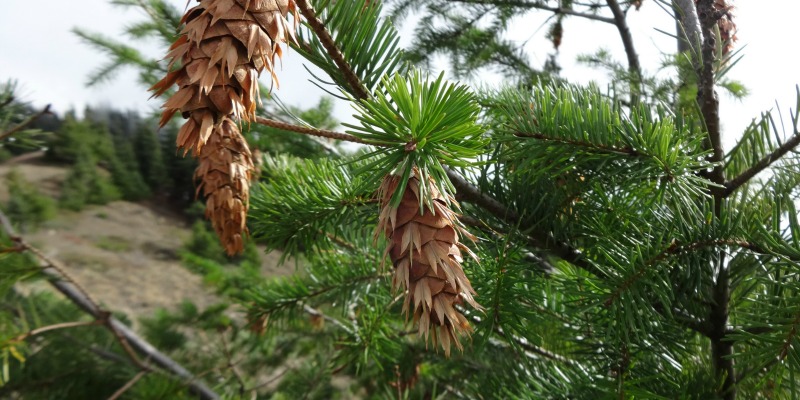
These towering giants inspire and amaze park visitors. Also called red firs, Oregon pines, and Douglas spruce, these evergreen trees are neither true fur trees, nor pines, nor spruces! They can live over 1,000 years, grow 250 feet tall, and can reach five to six feet in diameter.
Their seeds provide food for small animals such as chipmunks, mice, and birds. Native americans also used the trees for building, basketry and medical purposes.
- Latin Name: Pseudotsuga menziesii
- Habitat: From coastal lowlands and upper elevations in western washington to the central cascades in washington.
- Identifiable Traits: The unique cones will help you identify these trees. Read the traditional story below for the secret tip.
- Life-changer: Your friends will be wowed and educated when you retell this charming story:
Please enjoy this traditional local story adapted by Heidi Bohan via Washington Native Plant Society.
A long time ago, when the animals and plants could speak to each other, there was a great forest fire burning through the forest. Little Mouse ran as fast as he could away from the hot fire but he knew he could not outrace the fast moving flames. He began to run from tree to tree asking them if they could save him. First he ran to the bigleaf maple tree. “Help, help!” he cried. “Can you help me escape this fire?” Bigleaf maple tree replied, “No, I’m sorry little mouse, I am afraid that I will not be able to survive this forest fire”. The mouse then ran to the red cedar tree. “Help, help! Can you help me escape the fire?” “No, I’m sorry little mouse, but I do not think that I can survive this great forest fire, either” said Red Cedar. Mouse ran from tree to tree asking the same question, and getting the same answer.
Finally he came to a great old Douglas fir tree, with its thick furrowed bark. “Help, help, Douglas fir! Can you help me escape this fire?” And Douglas fir replied, “Yes, I think that my thick bark will protect me from the heat of these flames. I may be able to survive this great fire. Climb to the top of my branches, and climb under the scales of my cone for extra protection.” So, little mouse did as he was told, and climbed way up into Douglas fir tree and hid under the scales of the Douglas fir cones. Many other little mice followed him and did the same. And the Douglas fir tree was right, its thick bark protected them from the flames of the fire, and the fire passed them by.
To this day, if you look under the scales of the Douglas fir cone you can still see little mice hiding under the scales of the cones. Can you see them too?
